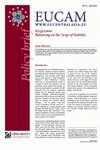Kyrgyzstan: Balancing on the Verge of Stability
Kyrgyzstan: Balancing on the Verge of Stability
Author(s): Anna Matveeva
Subject(s): National Economy, Economic policy, Government/Political systems, Security and defense, Economic development
Published by: CEPS Centre for European Policy Studies
Keywords: Kyrgyzstan; stability; economic policy; economic development; regime; security; political stability;
Summary/Abstract: In Kyrgyzstan the risk of instability remains. The country practices genuine elections and power-sharing, is open to international engagement, and promotes basic rights such as free speech. In 2010 Kyrgyzstan adopted a new Constitution, moving away from a super-presidential model to a system in which the president and the parliament share power more equally. Its economic performance is positive: the IMF assessed that the economy recovered quickly due to improved security and political stability, better-than-expected agricultural performance and a timely fiscal stimulus. However, it is the only ex-Soviet state to undergo two turbulent regime changes – the so called ‘Tulip-1’and ‘Tulip-2’ revolutions of 2005 and 2010 – and is affected by a strong regional split between the North and the South, one of the factors behind both ‘revolutions’. This makes Kyrgyzstan a country of paradoxes where it mixes positive developments with severe threats to its stability. The country is split geographically into the North and the South, each with a distinct identity. The first president, Akayev (until 2005), was from the North, and after his removal power shifted to the South, where Kurmanbek Bakiyev originated from (until April 2010).
Series: EUCAM - Policy Brief
- Page Count: 6
- Publication Year: 2011
- Language: English
- Content File-PDF

